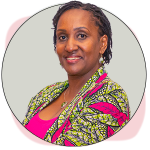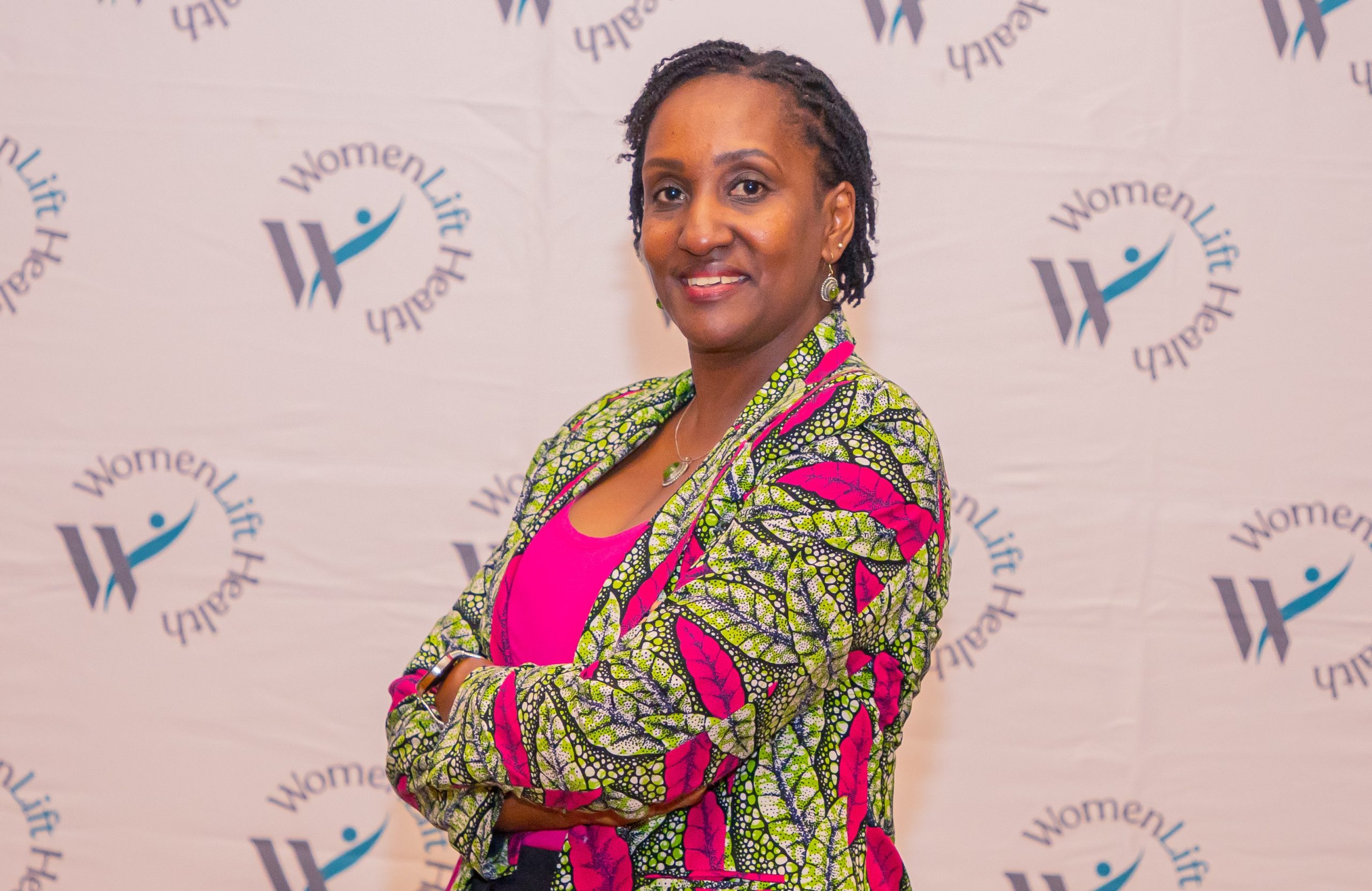Our team caught up with Dr. Janet Muriuki, Senior Director Health Workforce Development at IntraHealth; who shares her insights on achieving work-life harmony as a woman leader in public and global health. She discusses the challenges faced, personal strategies for maintaining balance, and the crucial role organizations play in supporting women leaders. Dr. Muriuki also offers a heartfelt message to those striving for harmony in their work and personal lives.

Tell us a bit about your background and what you do

My journey in public health began over two decades ago as a medical doctor, driven by a deep-seated passion for strengthening health systems and improving healthcare access. Throughout my career, I’ve dedicated myself to advocating for equitable health services and empowering health workers globally. For the past 15 years, I’ve had the privilege of working with IntraHealth International, where I’ve focused extensively on human resources for health (HRH).
My initial roles focused on strengthening HRH in Kenya (2005-2008; 2012-2021), currently I work (2021 – 2024) across Africa and Asia, overseeing projects aimed at enhancing health workforce capacity and resilience. From my early days with IntraHealth on projects like the Global Capacity Project to my tenure at Pathfinder (2009-2012) under the APHIA and APHIAplus projects, and back at IntraHealth as Senior Director Health Workforce Development, I’ve experienced firsthand the dynamic challenges and rewards of shaping health policies and initiatives at a country level, regional and global scale.
What does work-life harmony mean to you, particularly in the context of being a woman leader in public and global health?
Work-life harmony, to me, is more than just balancing professional and personal responsibilities—it’s about integrating these aspects of life in a way that allows both to thrive synergistically. As a woman leader in public and global health, I’ve come to realize that achieving perfect ‘balance’ is often elusive. Instead, it’s about recognizing and prioritizing moments when personal commitments need precedence, whether it’s being there for my daughters during key milestones or supporting aging parents. These moments are not interruptions but integral parts of my identity and purpose. When I’m able to harmonize these aspects of life, I find that I bring a deeper sense of empathy and understanding to my professional roles, driving more impactful and inclusive health outcomes globally.”
What are some of the challenges that women leaders face in achieving work-life harmony in public and global health? What has been your personal experiences with these challenges?
Women leaders in public and global health navigate a unique set of challenges when striving for work-life harmony. Before the flexibility brought about by remote work during COVID-19, the rigid office hours posed significant challenges for me as a mother and leader. Balancing demanding work commitments with the needs of young children required meticulous planning and often meant leaving the office promptly to engage fully in family responsibilities. This period taught me invaluable lessons in resilience and time management. It underscored the importance of setting clear boundaries and advocating for policies that support both professional advancement and personal well-being. My personal journey has been shaped by these challenges, reinforcing my commitment to fostering environments where women can thrive professionally while prioritizing their roles as caregivers and community leaders.
How do you prioritize self-care and well-being while ‘balancing’ the demands of leadership in the public and global health sector?
Prioritizing self-care amidst the demands of leadership in public and global health has been essential for my well-being and effectiveness. Initially, finding time for self-care was a challenge amidst intense work schedules and family responsibilities. However, I’ve learned to lean on my support network, including family, close friends, and professional mentors. Engaging in regular physical activity, such as morning walks and outdoor exercise sessions, has become a cornerstone of my self-care routine. Equally important has been nurturing personal hobbies and interests, whether it’s reading for pleasure, solo or family travel or reconnecting with friends. These activities not only recharge my energy but also enhance my effectiveness, resilience and creativity as a leader. Recognizing that self-care is not a luxury, but a necessity has been transformative, enabling me to navigate complex challenges with clarity and purpose.
Can you share any personal strategies or practices that have helped you maintain a sense of balance (harmony) and fulfilment in both your professional and personal life?
I make time to walk and connect with nature, scheduling it as part of my routine. To form a habit, I follow the idea of doing something consistently for 66 days until it becomes ingrained in my life. I prefer walking over running and often walk in Karura Forest in Nairobi, Kenya, my parents’ leafy neighbourhood, or at the club’s track, where I feel motivated by seeing elderly people taking care of themselves. Sharing these walks with my daughter is heartwarming and reminds me of the importance of support structures in maintaining self-care.
I also enjoy baking, cooking, traveling and watching movies, including cartoons, with my teen daughters. These activities help me feel young at heart and authentic as a leader. Spending time with my family and doing activities together helps me connect with my inner child.
What role can organizations and institutions play in supporting women leaders achieve work-life harmony in public and global health?
It’s crucial that HR policies provide equal opportunities for women, including during recruitment. Pregnant women should not be disqualified from roles, and organizational values should reflect inclusivity and support for women leaders.
Workplace culture is key. While I’ve had varied experiences with female bosses, male allies have been supportive. Supporting women during pregnancy and early motherhood is essential. Each woman’s experience is different; providing remote work options and facilities like lactation rooms can make a significant difference. For instance, I brought my first child to the office and had a private space for breastfeeding, which was rare in 2006-2007. With my second child, I coordinated travel to minimize time away from home, thanks to an understanding boss. These opportunities helped me grow as a leader with family responsibilities.
As I was undertaking my master’s degree, my mentor gifted me a breast pump and helped me create a schedule to complete my thesis during maternity leave. I graduated when my daughter was 18 months old and am forever grateful for her guidance. She set me on the right path to continuous learning.
Lastly, what message would you like to convey to other women leaders in public and global health who may be struggling to find harmony and fulfilment in their careers and personal lives?
Finding harmony in our demanding roles is a journey that requires patience and self-compassion. Women leaders should remember that it’s okay to prioritize their well-being and personal life alongside their professional ambitions. Seeking support from mentors, allies, and colleagues who understand the challenges women face is a great starting point.
A woman’s career progresses not as a continuous upward curve but as an upward, stepwise staircase. It’s essential to embrace moments of pause when needed, trusting that these pauses contribute to growth, both personal and professional, and prepare for the next level. Most importantly, women leaders should stay true to their values and passions, aligning them with their work environment whenever possible.
Together, we can navigate these challenges and thrive as leaders in our field.


